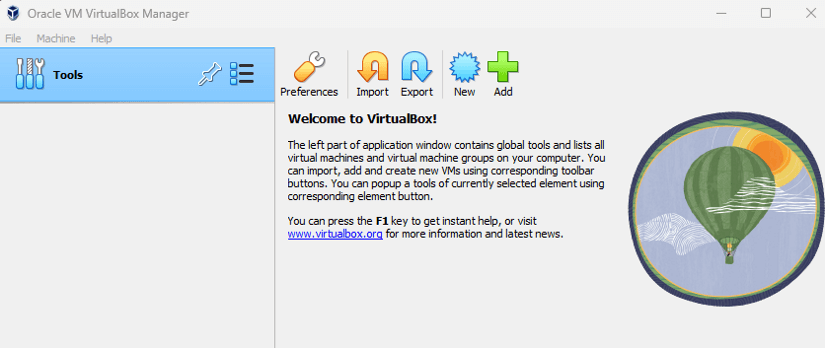In the constantly changing landscape of technology, there’s an increasing demand for flexible and efficient computing. This is where virtualization steps in as a potent solution, enabling you to operate multiple operating systems (OS) on a single physical computer. This is achieved through virtual machine installation which mimics a standalone computer system within your current hardware. In this guide, I’ll walk you through the process of setting up and installing a virtual machine on your system.
Key Takeaways
- Getting familiar with virtualization and its different types.
- Introducing the virtual machine and its roles.
- Learning the process of installing and setting up a virtual machine on a physical computer.
Requirements
- You need to have a computer with a 64-bit x86 processor with at least two cores.
- A minimum of 2 GB of RAM is required, but 4 GB or more is recommended for better performance.
- Free disk space of at least 20 GB is required for each virtual machine.
- You must have a virtual machine software (Hypervisor) on your computer.
What is Virtualization?
Virtualization is a technology that enables you to make several virtual instances of computer resources like hardware, operating systems, or storage on one physical machine, often called the host. These virtual instances are known as virtual machines(VMs), that use independently of each other and the host system.
Types of Virtualization
Various forms of virtualization exist, each of which performs distinctive roles and applications within IT infrastructure and resource administration. Here, I’ve enlisted some prevalent virtualization categories.
- Hardware virtualization: Hardware virtualization allows multiple virtual machines (VMs) to run on a single physical server or computer. It abstracts physical hardware, enabling efficient resource sharing and isolation between VMs. Hypervisors like VMware and Hyper-V are examples of hardware virtualization technology.
- Operating system virtualization: Also known as containerization, operating system virtualization enables multiple isolated user spaces or containers to share a single OS kernel. This approach is lightweight and efficient, making it ideal for running applications in a consistent environment. Docker is a well-known example of operating system virtualization.
- Storage virtualization: Storage virtualization abstracts physical storage resources, creating a virtualized pool of storage that can be allocated and managed more flexibly. It simplifies data storage, enhances data mobility, and often includes features like data replication and redundancy for improved data availability.
- Network virtualization: Network virtualization separates network services from the underlying hardware infrastructure. It allows the creation of virtual networks that are logically isolated, improving scalability, security, and flexibility. Technologies like Software-Defined Networking (SDN) and virtual LANs (VLANs) are used for network virtualization.
What is a Virtual Machine?
In computing, a virtual machine (VM) is a software-based emulation of a physical computer built upon computer architecture, replicating the capability of a computer. It operates as an independent computer system and is complete with CPU, memory, network connection, and storage. This virtual environment is established on a physical hardware system.
Moreover, the system Virtual Machine acts as a stand-in for a genuine physical machine. It supplies the necessary functionality to run a complete operating system. A software component known as Hypervisor isolates the virtual machine’s resources from the underlying hardware and allocates them as needed for the VM’s operation.
How does it work?
Virtualization technology enables the sharing of a single system among multiple virtual environments The Hypervisor handles and creates a division between physical resources and this virtual environment.
Virtual Machine (VMs) works by simulating the hardware and software characteristics of a physical computer system on a host machine. VMs offer an isolated environment where they operate as their own operating system (often called a guest OS).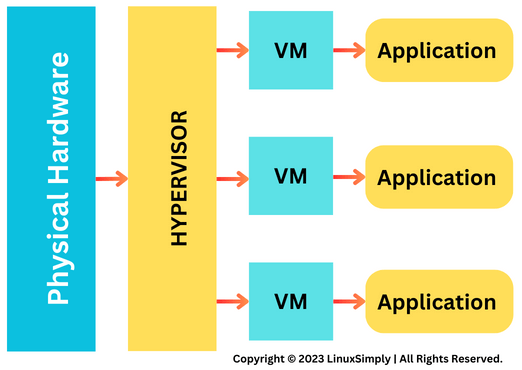
Each VM operates independently, believing it has exclusive access to the hardware, even though multiple VMs can coexist on the same physical machine. This isolation and resource management allows for the simultaneous execution of multiple operating systems and applications on a single piece of hardware
Why do we Install Virtual Machines?
There are a couple of reasons why users install virtual machines (VMs), depending on specific needs and objectives. Some common reasons, I’ve described here.
- Server consolidation: VMs allow multiple virtual operating systems to run on a single physical server. This consolidation optimizes the hardware utilization, reduces the number of physical servers, and reduces the complexity.
- Resource Isolation: VMs provide strong isolation between different environments. Applications and Operating systems running in one VM are separate from those in other VMs, enhancing security and stability.
- Resource management: VMs allow you to allocate specific amounts of CPU, memory, and storage to each virtual machine, providing fine-grained control over resource allocation.
- Development and Testing: The most common use of VMs is in Software development and testing environments. Developers can create isolated development environments that closely mirror production systems.
Virtual Machine Installation on Different Software
Virtual Machine is a powerful way to run multiple operating systems on a single physical computer, making them invaluable for software development, testing, and other tasks. Installing a virtual machine is the process of setting up a simulated computer system within your existing physical computer. In this guide, I’ll show you the installation process of the two most common virtual machines VMware Workstation and VirtualBox.
A. Install Virtual Machine on VMware Workstation Pro
Linux offers a diverse array of distributions, each tailored to different used cases and preferences. Exploring these distributions can be an enriching experience for developers, cybersecurity enthusiasts, and anyone looking to expand their technical skills.
One of the noteworthy features of VMware is Shared Clipboard which allows users to easily copy and paste text and files between a virtual machine and the host operating system, and even between multiple virtual machines running on the same host. This functionality bridges the gap between the virtual and physical environment, making it feel like a natural extension of your desktop.
Creating virtual machines to run operating systems like Ubuntu, Kali Linux, and Arch Linux with VMware Workstation Pro is a powerful platform for creating and managing virtual machines (VMs), allowing you to effortlessly install and experiment with various Linux flavors.
The following articles show how to install a Virtual Machine on VMware workstation:
- Installing Ubuntu on VMware Workstation [Easiest Guide]
- A Comprehensive Guide on Installing Kali Linux on VMware
- Installing Arch Linux on VMware
Nevertheless, if you don’t have the VMware Workstation installed, here’s how to install
VMware Workstation Pro.
VMware Workstation Installation
Installing VMware Workstation involves downloading the software, following the installation wizard, and configuring virtual machines with ease.
Steps to Follow >
➊ At first, download VMware Workstation Pro. Hit the DOWNLOAD Now button to download. You can choose any of the Workstations according to your operating system. In my case, I’ll show here downloading Workstation 17 Pro for Windows.
You can choose any of the Workstations according to your operating system. In my case, I’ll show here downloading Workstation 17 Pro for Windows.
➋ Now, click the Start Download button on the IDM downloader. You can choose the path where you want to keep the download file.
You can choose the path where you want to keep the download file.
Open the location of the file manager and double-click on the VMware downloaded file to install it.
At the next prompt, click on the next button.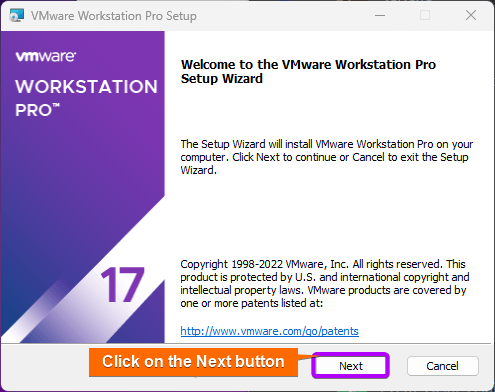
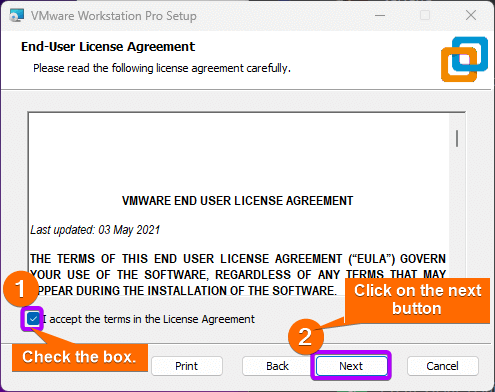

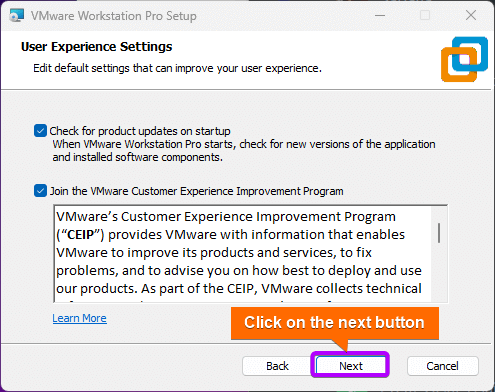
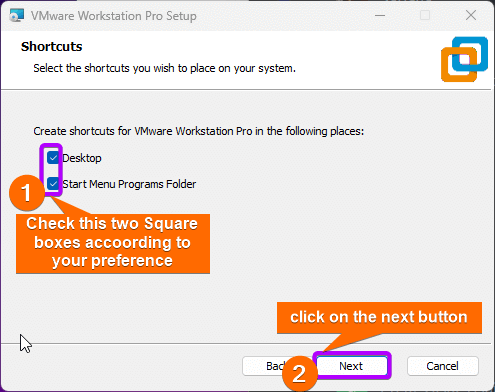
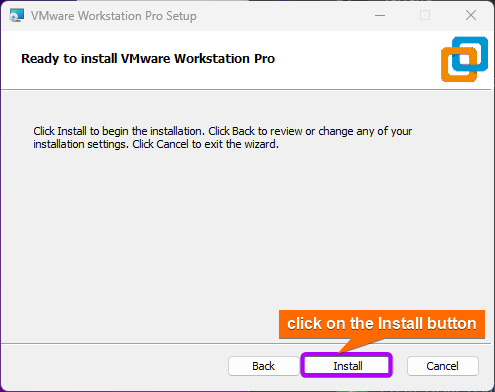
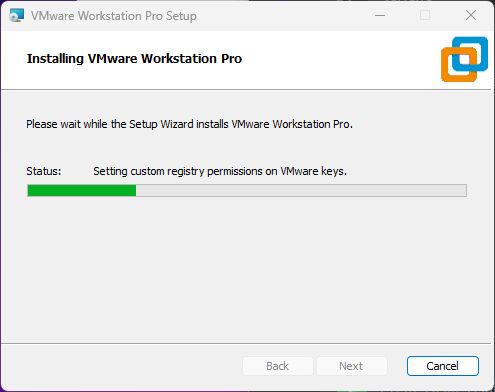
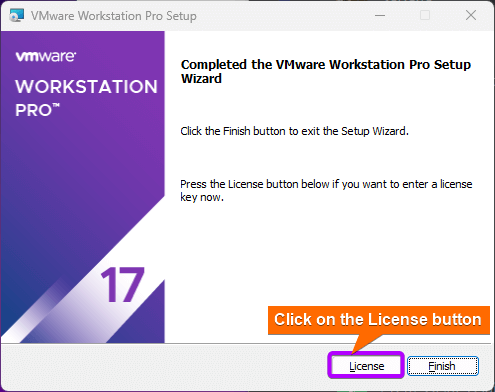
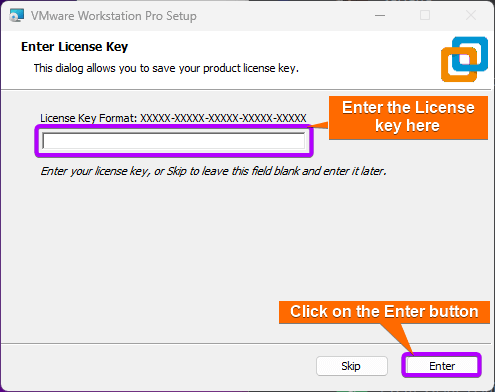
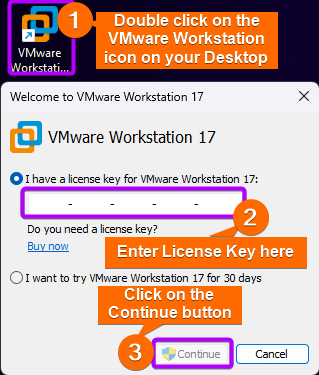
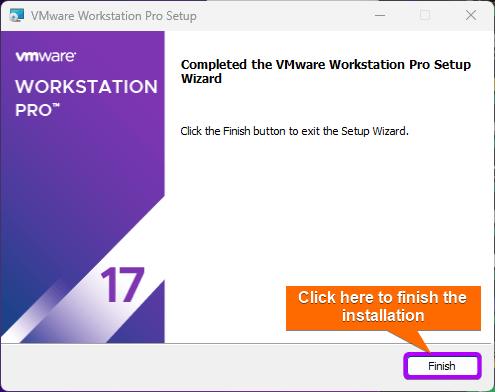
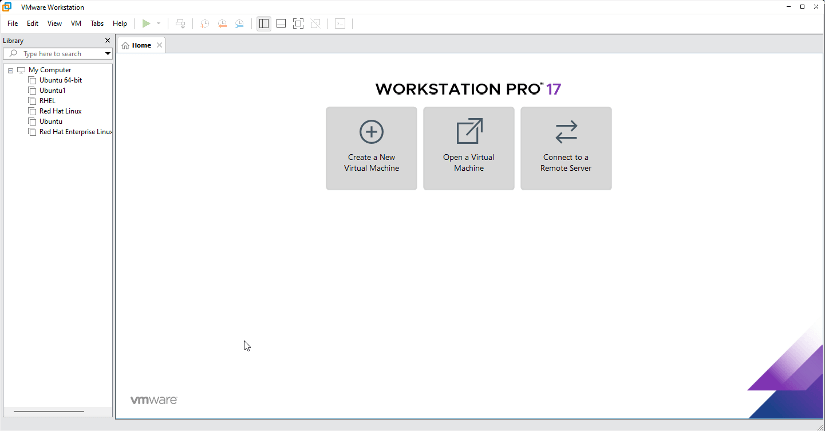
Common VMware Issues and Solutions
VMware is a widely used virtualization technology that enables the creation and management of virtual machines (VMs) on a physical host. While VMware offers benefits, users may encounter common issues and challenges. Here are some of them:
- VMware Tools not running: The VMware Tools not running issue can disrupt the seamless integration of virtual machines with the host operating system. This problem often leads to the loss of essential features, such as shared clipboard functionality and optimized display settings. Users may encounter challenges in managing and transferring data between the host and guest systems. Resolving this issue typically involves restarting or reinstalling VMware Tools, ensuring compatibility with the guest OS, and verifying the proper installation, ensuring a smoother and more efficient virtualization experience.
- Operating System Not Found VMware: The Operating System Not Found error in VMware typically occurs when the virtual machine (VM) cannot locate a valid operating system to boot from. This issue can be caused by several reasons such as VM configuration errors, incorrect installation processes, compatibility issues, hardware virtualization support, etc. To resolve this issue, you can check the boot order, verify the VM’s storage, inspect the operating system installation, verify hardware compatibility, and recreate the VM (if necessary).
B. Install Virtual Machine on VMware Workstation Player
You can transform your computer into a powerful development or testing environment by installing Ubuntu on VMware Player. In three straightforward steps, you’ll have Ubuntu up and running on a virtual machine The following article will show you how to install Ubuntu on VMware Workstation Player
However, if you don’t have VMware Workstation Player installed, here’s how:
VMware Workstation Player Installation
VMware Workstation Player offers a user-friendly platform to create and manage virtual machines. To install the VMware Workstation Player, you can follow the steps stated in this guide.
Steps to Follow >
➊ Download the VMware Workstation 17 player.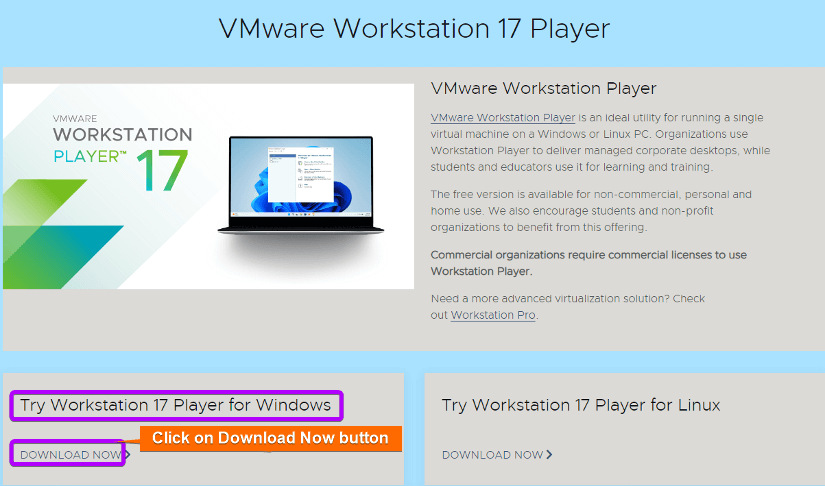
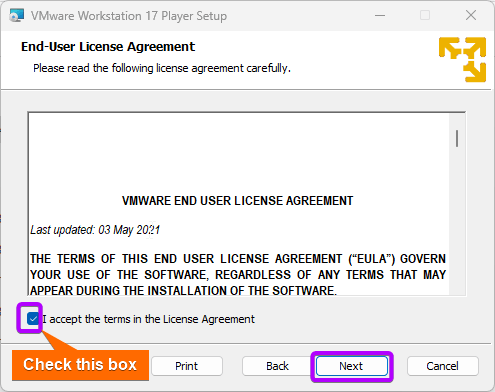
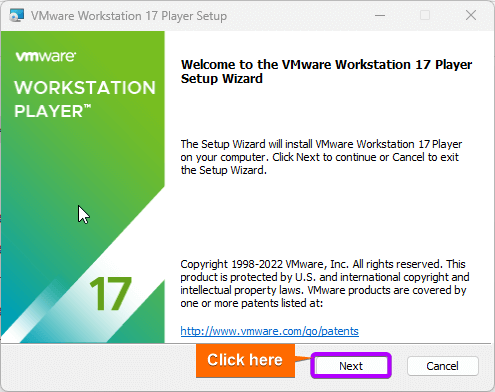

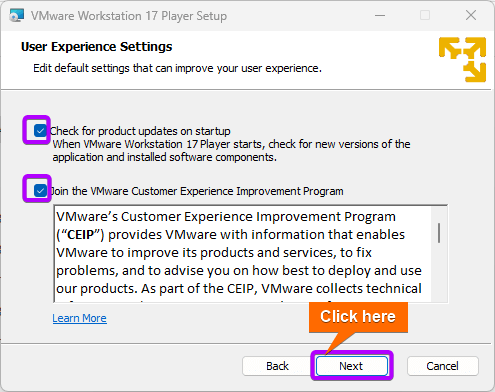

➎ Now, click on the Install button to begin the installation. 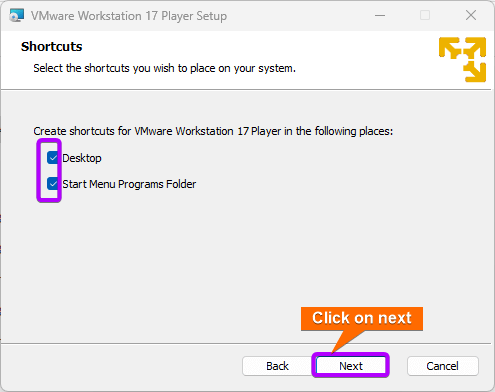
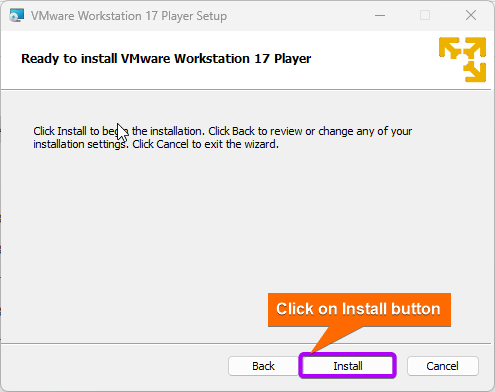
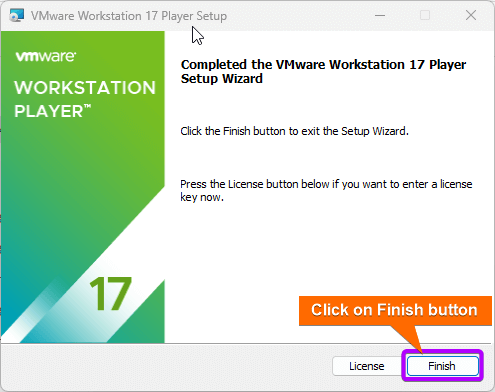
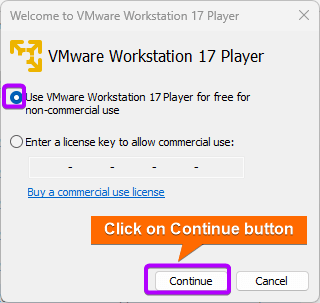
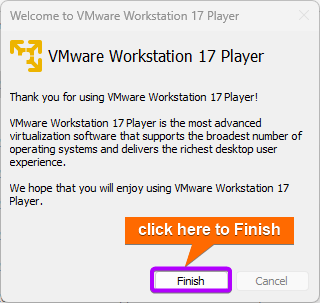
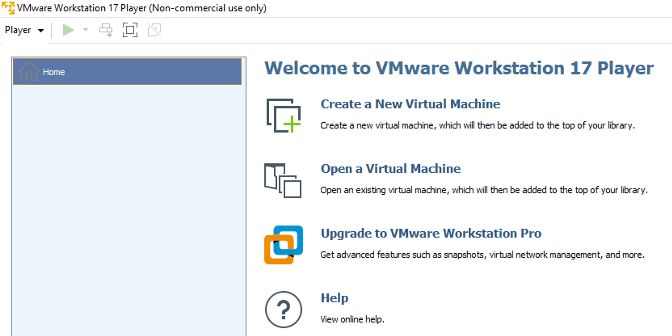
Common VMware Player Issues and Solutions
While working with VMware Player, it’s possible to face some unexpected situations or issues like performance problems, VMware tool errors, Networking issues, etc. To recover the situation to a stable environment, you can detect the problem and resolve it with their respective solutions.
C. Install Virtual Machine on VirtualBox
You can also create virtual machines on another open-source software which is VirtualBox. You can install and operate Linux-based distros such as Ubuntu, Arc, Kali Linux, etc.
The following articles show how to install Virtual Machines on VirtualBox
- Install Ubuntu on VirtualBox
- install guest additions Virtualbox ubuntu
- Install Arch Linux on VirtualBox
- Install Fedora on VirtualBox
- Install Debian on VirtualBox
- VirtualBox guest additions Debian
- How to install Kali Linux on VirtualBox
- How to install Centos 7 on VirtualBox
- VirtualBox guest additions centos
If you don’t have VMware workstation Player installed, here’s how:
Virtual Box Installation
Installing VirtualBox is a straightforward process including downloading the software for your operating system, following the installation prompts, and creating virtual machines to run multiple OSes on your computer. You’ll get a step-by-step roadmap of the installation process below.
Steps to Follow >
➊ At first, download the VirtualBox file.
You can download VirtualBox according to your operating system’s category. I have downloaded it for Windows here. 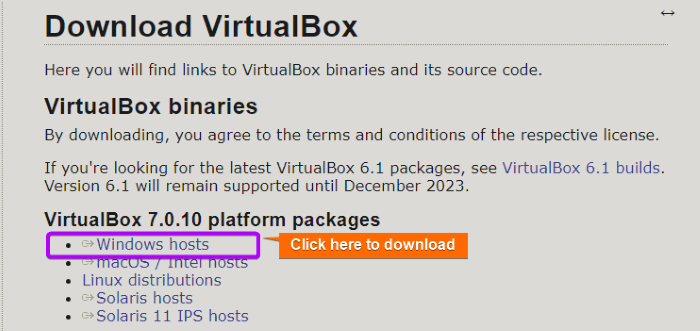

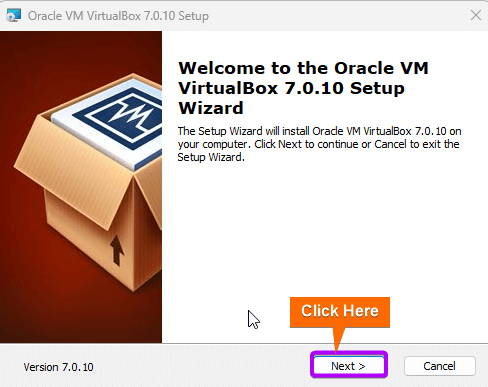
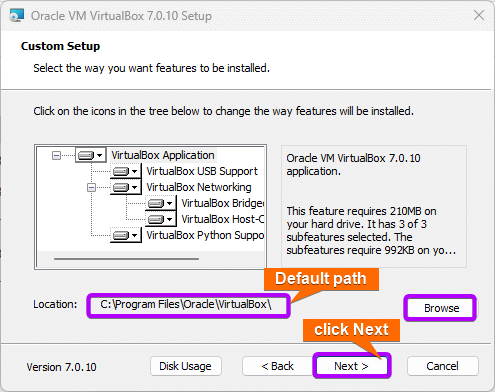
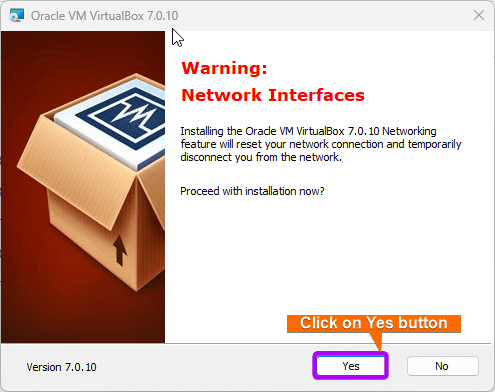
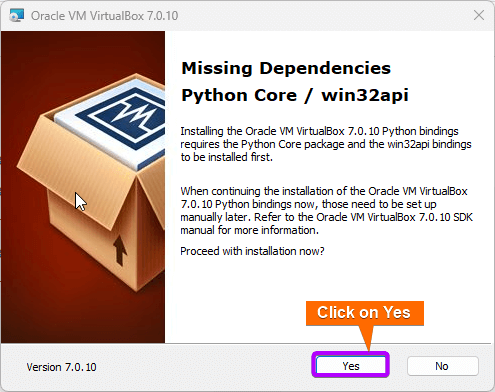
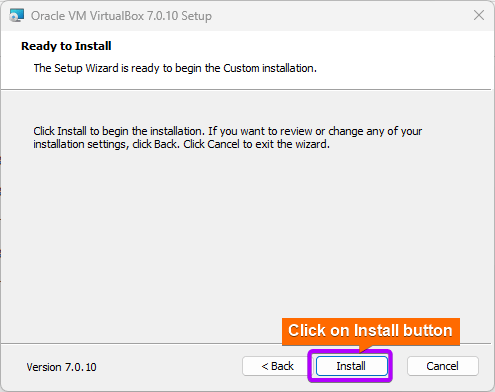
➐ In the end, Click on the Finish button to accomplish the installation process. 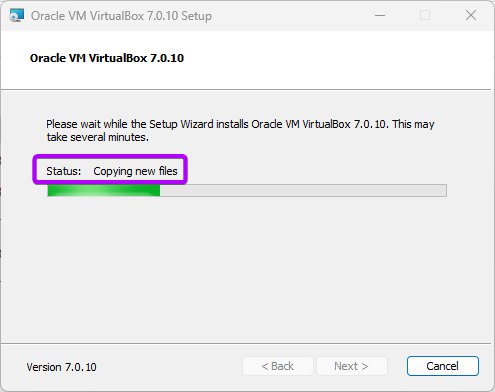
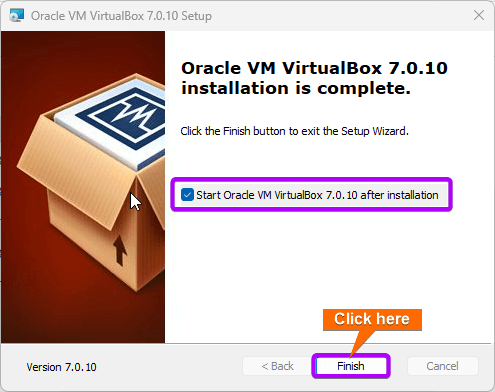
Common VirtualBox Issues and Solutions
There are several issues that can occur while working with VirtualBox such as performance problems, and networking issues. Sometimes VM crashes, and incompatibility can hinder your operating processes. To resolve these issues, you have to install and configure VirtualBox sincerely.
Comparison between Different Virtual Machine Software
There are various virtualization platforms and technologies available, each with its own characteristics and use cases. Here’s a comparison of some popular virtual machine technologies.
VMware Workstation vs VMware Player
VMware Player, now known as Workstation Player, is a no-cost and simplified virtualization tool primarily aimed at individual users with basic virtualization needs. Conversely, VMware Workstation (Pro) is a paid, comprehensive virtualization demand. Your selection between them hinges on your particular requirements and whether you necessitate the advanced functionalities provided by VMware Workstation.
VMware vs. Virtual Box
VMware is a premium virtualization solution known for its robust performance and advanced features, making it ideal for professional and business environments. In contrast, VirtualBox is an open-source, free virtualization tool that offers a user-friendly interface and supports various host and guest operating systems. While VMware is preferred for its comprehensive capabilities, including advanced networking and snapshot management, VirtualBox is a versatile, cost-effective option suitable for personal and educational use.
Here’s a comparison table that includes VMware Workstation, VMware Player (now known as VMware Workstation Player), and VirtualBox, highlighting key differences among these virtualization solutions:
| Feature | VMware Workstation | VMware Player | VirtualBox |
|---|---|---|---|
| License | Paid with a free trial | Paid with a free version | Free |
| Target Audience | Professionals, Businesses | Individuals and enthusiasts | General users and learners. |
| VM Creation & Management | Extensive capabilities | Limited | Moderate Capabilities |
| Snapshot Management | Advanced | Basic | Basic |
| Networking Options | Advanced | Basic | Moderate capabilities |
| OS Compatibility | Windows and Linux | Windows and Linux | Windows, macOS, Linux, and more |
| Team Collaboration | Yes | NO | No |
| User-Friendly | Suitable for experts | Suitable for beginners | Beginner-friendly |
The choice among these virtualization solutions ultimately depends on your specific needs and preferences.
Conclusion
The installation of virtual machines unlocks a realm of opportunities for individuals requiring the concurrent operation of numerous operating systems and applications on a solitary physical computer. Whether you are a developer, an IT expert, or someone interested in experimenting with various operating systems, virtualization technology offers an effective and user-friendly solution. Installing a virtual machine may seem complex, but with the right virtualization software and this step-by-step guide, you can easily create, configure, and use VMs for a variety of purposes expanding your computing capabilities and flexibilities.
People Also Ask
Related Articles
- Installing Ubuntu on VMware Workstation [Easiest Guide]
- Installing Ubuntu on VMware Player [Easiest Guide]
- A Comprehensive Guide on Installing Kali Linux on VMware
- Installing Arch Linux on VMware [Easiest Guide]
- VMware Shared Clipboard [Enable Copy-Paste & Folder Sharing]
- [Solved] VMware tools not running
- [Fixed] Operating System Not Found on VMware
- VMware Workstation Pro vs VMware Player [Ultimate Comparison]
- How to Install Ubuntu on VirtualBox [A Complete Guide]
- How to Install Arch Linux on VirtualBox [3 Methods]
- How to Install Fedora on VirtualBox [Simple Guide]
- How to Install Debian on VirtualBox [Step-by-Step]
- How to Install VirtualBox Guest Additions on Debian
- How to Install Kali Linux on VirtualBox [Easiest Guide]
- How to Install CentOS 7 on VirtualBox [8 Easy Steps]
- How to Install VirtualBox Guest Additions on CentOS
<< Go Back to Linux OS Installation Guide | Learn Linux Basics
FUNDAMENTALS A Complete Guide for Beginners

